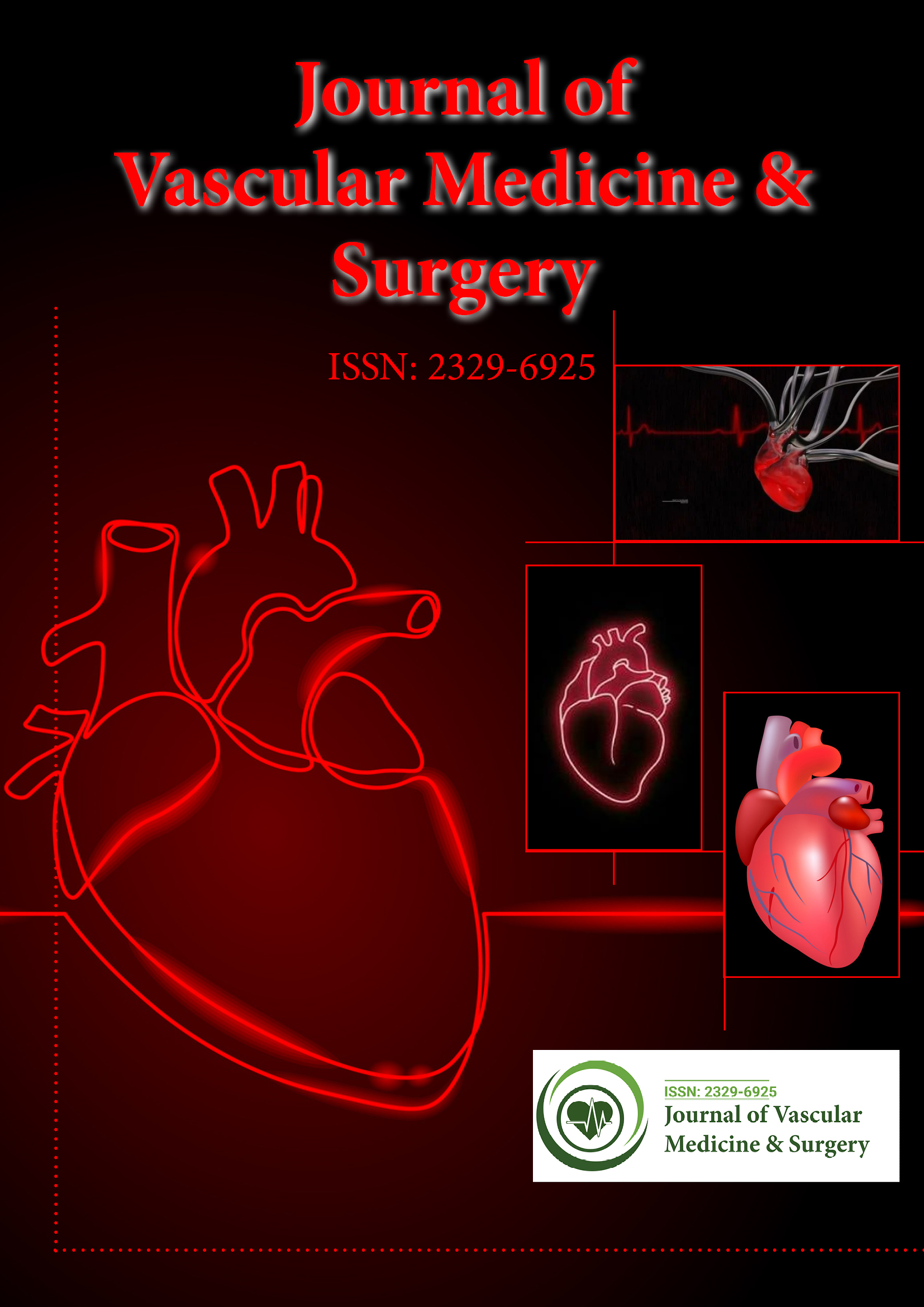Indexed In
- Open J Gate
- Academic Keys
- RefSeek
- Hamdard University
- EBSCO A-Z
- OCLC- WorldCat
- Publons
- Euro Pub
- Google Scholar
- SHERPA ROMEO
Useful Links
Share This Page
Journal Flyer

Open Access Journals
- Agri and Aquaculture
- Biochemistry
- Bioinformatics & Systems Biology
- Business & Management
- Chemistry
- Clinical Sciences
- Engineering
- Food & Nutrition
- General Science
- Genetics & Molecular Biology
- Immunology & Microbiology
- Medical Sciences
- Neuroscience & Psychology
- Nursing & Health Care
- Pharmaceutical Sciences
Opinion Article - (2022) Volume 10, Issue 5
Overcoming the Anesthetic Challenges in Patients with Cardiac Comorbidities
Sridhar Devarajan*Received: 01-Jun-2022, Manuscript No. JVMS-22-16886; Editor assigned: 06-Jun-2022, Pre QC No. JVMS-22-16886(PQ); Reviewed: 24-Jun-2022, QC No. JVMS-22-16886; Revised: 01-Jul-2022, Manuscript No. JVMS-22-16886(R); Published: 08-Jul-2022, DOI: 10.35248/2329-6925.22.10.459
Description
Cardiovascular diseases are still the main cause of death around the world. Patients undergoing major non-cardiac surgery face a considerable risk of cardiac problems. Perioperative risk stratification aids anesthesiologists in providing adequate care to patients who are at higher risk for such operations. The existence or absence of clinical predictors of higher perioperative cardiovascular risk, cardiac functional status, and surgery-related risks are all factors to consider when assessing the risks of perioperative cardiac problems. In cardiac patients, perioperative cardiac events are serious consequences following non-cardiac surgery. In the general surgery population, perioperative cardiac events occur at a rate of about 1%. The Physical Status classification system of the American Society of Anesthesiologists divides patients into five categories based on their physical condition. Active cardiac illnesses are defined as unstable or severe angina, recent myocardial infarction, decompensated heart failure, severe arrhythmias, and decompensated valvular disease, according to these guidelines. Urologic surgery is classified as intermediate-risk surgery, with a cardiac risk of 1%-5%, according to these recommendations.
If the tumor is entering the IVC, cardiothoracic and vascular surgery may be required, as well as cardiopulmonary bypass. The most serious side effects of radical nephrectomy are bleeding and thrombus migration, which can lead to tumor embolism. Reduced venous return causes a decrease in end diastolic volume and stroke volume when hypovolemia develops. Reduced stroke volume leads to lower cardiac output and myocardial vascularization, resulting in myocardial ischemia and additional contractility reduction. Chronic drugs are another concern that the anesthesiologist must deal. All medicines, with the exception of angiotensin-converting enzyme inhibitors, oral anti-diabetic agents, and anti-platelets, can be continued.
If the patient has coronary stents, the anesthesiologist must switch to aspirin instead of clopidogrel. In patients with an elevated risk of bleeding, it is theoretically possible to stop antiplatelet medication 4-5 days before surgery without exposing them to hypercoagulability. Hypotension induced tachycardia’s that cause a shortened diastolic duration and reduction in blood flow to myocardium. All of these events cause myocardial ischemia and reduce contractility, complicating existing heart illness. An intraoperative trans esophageal echocardiography can be conducted if tumor embolism is suspected (sudden decreases in carbondioxide and oxygen saturation).The pleura is frequently injured during tumor preparation, resulting in open pneumothorax, which increases the risk of postoperative respiratory problems because surgical hypoxemia can worsen cardiac function in patients with weak cardiac reserves, the anesthesiologist must be aware of this issue. Hypoxia can cause myocardial ischemia, which can worsen chronic heart failure and trigger arrhythmias. Patients are frequently positioned in the lateral decubitus posture during renal cell tumor excision. This position's physiological alterations are thought to limit venous return and preload. These alterations are normally temporary, although hypovolemia is more severe in dehydrated patients (those with heart failure on prolonged diuretic medication), patients on mechanical ventilation, and those who are laterally positioned (partially occluding IVC).
The bladder, prostate, seminal vesicles, and lymph nodes are removed during a radical cystectomy. When an ideal conduit is planned, patients are frequently given laxatives to empty out their intestines. Dehydration, hypokalemia, and metabolic acidosis are common side effects. The volume status, electrolytes, and presence of acidosis must all be closely monitored by the anesthesiologist. Because bleeding can occur during the Santorini's plexus manipulation, large diameter IVs and central lines cannulation are recommended. Both hypovolemia (which might cause reduced cardiac output) and volume overload must be avoided by the anesthesiologist (which can lead to edema, decomposition of chronic heart failure, and pulmonary edoema with subsequent hypoxemia). Even in patients with comorbidities, the patient's result is frequently favorable. The radical prostatectomy is the preferred surgical procedure for prostate cancer eradication. This can be done either open surgery or with a laparoscopic procedure. Less blood loss and faster recovery are advantages of laparoscopic and robotic surgery. The most common consequence after an open radical prostatectomy is bleeding. Because perioperative anaemia is known to cause cardiac issues, a perioperative hemoglobin level of roughly 10 g/dl is considered appropriate and is the gold standard.
Citation: Devarajan S (2022) Overcoming the Anesthetic Challenges in Patients with Cardiac Comorbidities. J Vasc Surg. 10:459.
Copyright: © 2022 Devarajan S. This is an open access article distributed under the terms of the Creative Commons Attribution License, which permits unrestricted use, distribution, and reproduction in any medium, provided the original author and source are credited.

